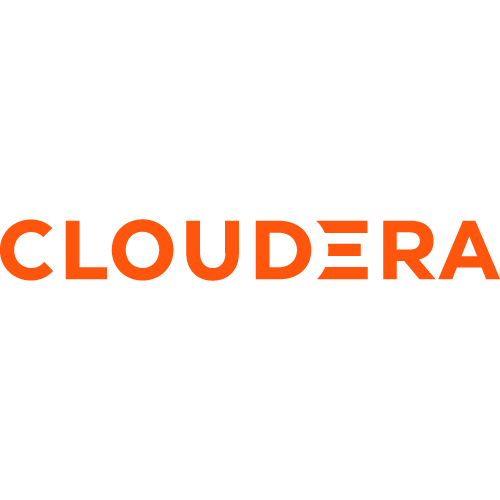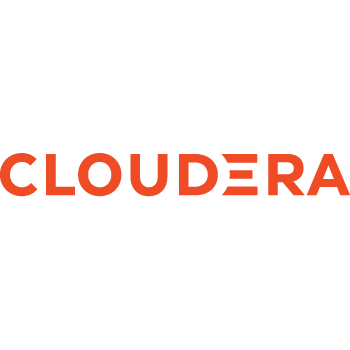
Overview
Cloudera Enterprise (BYOL) with Cloudera Director 2.8 enables the rapid deployment of Cloudera Director into your AWS environment. As an integrated part of Cloudera Enterprise, Cloudera Director offers reliable, unified, and simple lifecycle management of production-grade Cloudera Enterprise clusters and workloads - whether long running or transient - in AWS.
With Cloudera Enterprise, agencies and enterprises are enabled the flexibility to run a variety of workloads, including batch and near real-time stream processing, interactive SQL, enterprise search, machine learning, and analytics, in a unified, easy-to-use platform. Additionally, Cloudera Enterprise couples these capabilities together with the robust security, governance, data protection, management, and cloud native experience that the modern agency and enterprise requires. Altogether, Cloudera Enterprise offers analysts and operators the right mix of flexible analysis and data depth and breadth to find the answers without sacrificing oversight and security to protect and govern the data and its use.
Please note: this BYOL AMI product is based on CentOS 7, and available for use only within the AWS GovCloud region. Additionally, the product is for use with customer provided per-node Cloudera Enterprise licensing (available on a subscription basis in five editions, each designed for your specific needs), supported by Bronze Level (8x5) Support, and with the Cloudera Government Solutions Support options.
Highlights
- Cloudera Enterprise is the modern platform for machine learning and analytics, optimized for the Cloud, offering flexible support for both persistent and transient clusters in AWS, and hybrid environments.
- With Cloudera Enterprise you can run the same enterprise-grade Cloudera application in the cloud or on-premises, and easily migrate workloads between environments.
- With persistent clusters, you deploy one or more clusters that you can scale up or down to adjust to demand. With transient clusters, you can programmatically launch a cluster, schedule any jobs, and shut the cluster down after the jobs complete.
Details
Introducing multi-product solutions
You can now purchase comprehensive solutions tailored to use cases and industries.

Features and programs
Financing for AWS Marketplace purchases

Pricing
Vendor refund policy
Refunds are not currently provided.
How can we make this page better?

Legal
Vendor terms and conditions
Content disclaimer
Delivery details
Cloudera Director 2.8 - VPC on Public Subnet
The CloudFormation Template (CFT) will prompt the subscriber for the following input values, and then subsequently provision the necessary AWS infrastructure and Cloudera Director version 2.7 instance into the subscriber's specified VPC. The requested subscriber inputs are as follows: 1) EC2 Instance Type for the Cloudera Director Host (default: c4.large); 2) Existing prerequisite EC2 KeyPair that the Cloudera Director instance will launch with; 3) VPC ID of the existing prerequisite VPC that the Cloudera Director instance will launch in; 4) Subnet ID of the existing prerequisite Public Subnet of the VPC that the Cloudera Director instance will launch in; 5) CIDR range from which the subscriber(s) are likely to SSH into the Cloudera Director instance. Note: a value of 0.0.0.0/0 will allow access from ANY IP address. From these subscriber inputs, the CFT will provision: 1) A new security group configured with: a) Port 22 open for ingress traffic from the user specified CIDR range; b) All ports open for ingress traffic between hosts within the security group; c) All ports open for egress traffic; 2) A new IAM Role/Instance Profile that the Cloudera Director EC2 host requires to allow the EC2 instance to be able to make AWS API requests without the need to use or distribute AWS credentials (accessKey and secretAccessKey); 3) A new EC2 instance for the Cloudera Director host leveraging the CGSI listed Director BYOL AMI. The instance will be launched with two 30 GB EBS (GP2) volumes, allocated an EIP, and configured with the new security group, the new IAM Instance Profile, and the specified EC2 KeyPair.
CloudFormation Template (CFT)
AWS CloudFormation templates are JSON or YAML-formatted text files that simplify provisioning and management on AWS. The templates describe the service or application architecture you want to deploy, and AWS CloudFormation uses those templates to provision and configure the required services (such as Amazon EC2 instances or Amazon RDS DB instances). The deployed application and associated resources are called a "stack."
Version release notes
Initial Release
Additional details
Usage instructions
To get started with using the Cloudera Enterprise (BYOL) - Cloudera Director 2.8 please follow the steps contained in the release document at the following link.
Please note the following: This product is available for use only within the AWS GovCloud region, and for deployment into an existing VPC configured with the prerequisite Public Subnet(s), Internet Gateway, and Routing Table(s).
An AWS account with the necessary permissions to use CloudFormation and to create an EC2 Instance, an Elastic IP (EIP), a Security Group, and an IAM Role/Instance Profile is required.
Before launching the subscription process, please have the necessary prerequisite AWS GovCloud region infrastructure items that the Cloudera Director instance will launch with ready, as follows:
- An EC2 KeyPair
- The VPC ID of the VPC
- The Subnet ID of the Public Subnet of the VPC
- The CIDR range from which the subscriber(s) are likely to SSH into the Cloudera Director instance.
Support
Vendor support
Cloudera Government Solutions offers best-in-class SLA-based support as part of a Cloudera Enterprise subscription, providing end-to-end coverage for Cloudera Enterprise to help you resolve issues quickly.
To learn more about our support capabilities please visit: https://www.cloudera.com/more/services-and-support.html
To learn more about Cloudera Government Solutions US based support capabilities for our US Public Sector customers, please visit: https://www.cloudera.com/solutions/public-sector.html Please visit Cloudera's support portal at:
AWS infrastructure support
AWS Support is a one-on-one, fast-response support channel that is staffed 24x7x365 with experienced and technical support engineers. The service helps customers of all sizes and technical abilities to successfully utilize the products and features provided by Amazon Web Services.
Similar products



